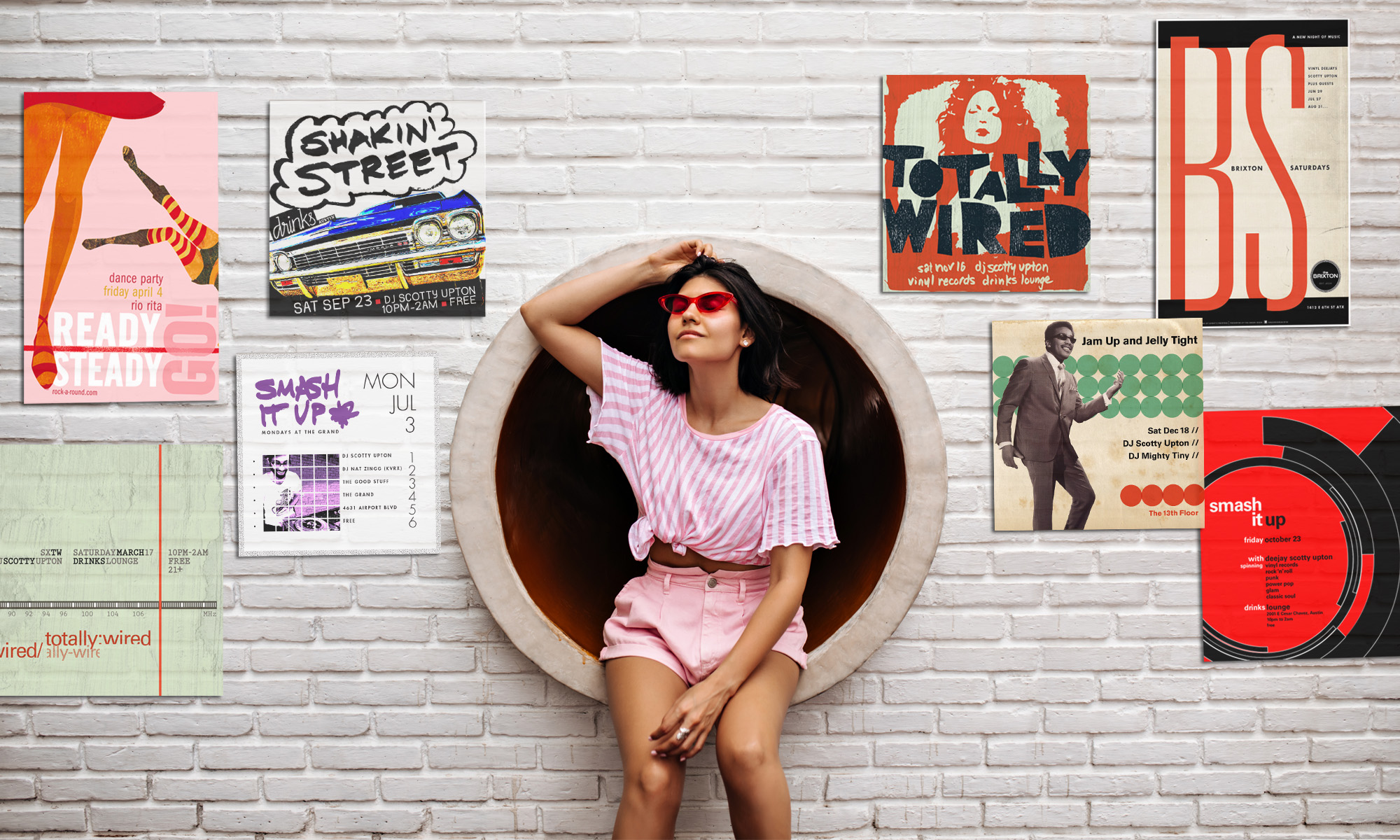 “But will they have free drinks?” That cry will be heard throughout Austin during the SXSW festival, from March 11 through 20. But of course we all have our different reasons for attending. Filmmakers, technology geeks, and live music enthusiasts alike can get their mojo on.
“But will they have free drinks?” That cry will be heard throughout Austin during the SXSW festival, from March 11 through 20. But of course we all have our different reasons for attending. Filmmakers, technology geeks, and live music enthusiasts alike can get their mojo on.
Wednesday through Saturday, the Austin Convention Center will house the 29th annual Flatstock poster show and the Texas Guitar Show. Flatstock has the latest in screen-printed poster designs, and promises to have a “portable” printer on-hand to show you how it’s done. Both shows are free to the public.
Interactive design firm Frog Design will host its annual SXSW kickoff party March 8. Industry peers will gather for a night of revelry and conversation.
And, oh, the music! I will be attending mostly day shows. Wednesday the 16th… Neo soul boys Fitz & The Tantrums will play a free show in the Waterloo Records parking lot. Texas’ own Bad Sports will play a day show at Trailer Space Records. Two interesting bands feature at Red River Street goth club Elysium: tough and tight garage rockers The Woggles, and Japanese punk crazies Peelander-Z. San Francisco’s Thee Oh Sees will be at Spiderhouse on the drag. Draft beer emporium The Ginger Man will have three great Texas bands: Ugly Beats, Thunderchiefs, and Eve & the Exiles. On the east side, newly-opened pub The Grackle will host “Gracklefest”—four days of free shows. Do not miss Flesh Lights, an Austin trio led by that young bolt of lightning Max Vandever. Two more must-see Austin bands OBN IIIs and my soccer mate Alfonso’s band, Manikin, will be at Beerland. Thursday the 17h… Poet, survivor, lover Kacy Crowley will open for The Sour Notes at Betsy’s Bar downtown. Soul shouters Black Joe Lewis & The Honeybears will dominate another free parking lot show at Waterloo, and then later at the Mohawk. I love the twee-ness that is The Carrots, and they’ll appear at the east side’s Baby Blue Studios. For $10 you can see former 13th Floor Elevators legend Roky Erickson and pals including Peter Buck from R.E.M. at Threadgills. For me a SXSW highlight will be UK band Pete And The Pirates at British pub Dog & Duck. On the same stage are The Minus Five, featuring former members of R.E.M. and The Dream Syndicate. Friday the 18th… Last year I spent some time on the beautiful grounds of the French Legation Museum. This year electroclash hell-raisers !!!, Cults, and tUnE-yArDs are my picks. The Shangri-la is a cherished east side neighborhood spot, and local boys done good The Hex Dispensers will be a good reason to stop by. Two festivals ago, I witnessed Gentlemen Jesse And His Men perform a scorching set in a record store parking lot. This time, the men will be outside at the Mohawk—not to be missed. South Congress Avenue shouldn’t be left out, and tiny outsider art gallery Yard Dog will somehow manage to find space for former X frontwoman Exene Cervenka to perform. Two excellent indie rock bands—Okkervil River, and Surfer Blood—perform at Flamingo Cantina. If you remember 1980s punk rockers ALL, their former singer is now fronting a band called Drag The River, and will be performing a few shows around town: at Hole in the Wall, Liberty, and Barbarella. Saturday the 19th… “Gracklefest” continues with Peelander-Z, 8-bit electro nerds Anamanaguchi, and my friends Cody, Zach, Nick, and Weston from Austin punk rockers Lost Controls. Rainey Street is fast becoming an alternative for dining and entertainment, and Okkervil River and Tapes ‘n Tapes will grace Lustre Pearl’s patio stage. Sunday the 20th… The last day of the festival goes out with a bang at the Side Bar. Flesh Lights, former Guided By Voices guitarist Doug Gillard, and two garage bands, Austin’s Ugly Beats and Pittsburgh’s Cynics will bring the house down.
For the most accurate, complete, and up-to-date SXSW music listings, I urge you to visit Showlist Austin.




